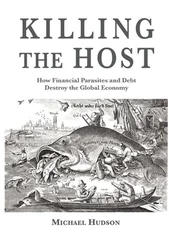Mariana Mazzucato - The Value of Everything - Making and Taking in the Global Economy
Здесь есть возможность читать онлайн «Mariana Mazzucato - The Value of Everything - Making and Taking in the Global Economy» весь текст электронной книги совершенно бесплатно (целиком полную версию без сокращений). В некоторых случаях можно слушать аудио, скачать через торрент в формате fb2 и присутствует краткое содержание. Год выпуска: 2018, ISBN: 2018, Издательство: Penguin Books Ltd, Жанр: economics, на английском языке. Описание произведения, (предисловие) а так же отзывы посетителей доступны на портале библиотеки ЛибКат.
- Название:The Value of Everything: Making and Taking in the Global Economy
- Автор:
- Издательство:Penguin Books Ltd
- Жанр:
- Год:2018
- ISBN:9780241188828
- Рейтинг книги:3 / 5. Голосов: 1
-
Избранное:Добавить в избранное
- Отзывы:
-
Ваша оценка:
- 60
- 1
- 2
- 3
- 4
- 5
The Value of Everything: Making and Taking in the Global Economy: краткое содержание, описание и аннотация
Предлагаем к чтению аннотацию, описание, краткое содержание или предисловие (зависит от того, что написал сам автор книги «The Value of Everything: Making and Taking in the Global Economy»). Если вы не нашли необходимую информацию о книге — напишите в комментариях, мы постараемся отыскать её.
The Value of Everything: Making and Taking in the Global Economy — читать онлайн бесплатно полную книгу (весь текст) целиком
Ниже представлен текст книги, разбитый по страницам. Система сохранения места последней прочитанной страницы, позволяет с удобством читать онлайн бесплатно книгу «The Value of Everything: Making and Taking in the Global Economy», без необходимости каждый раз заново искать на чём Вы остановились. Поставьте закладку, и сможете в любой момент перейти на страницу, на которой закончили чтение.
Интервал:
Закладка:
The swing from value determining price to price determining value coincided with major social changes at the end of the nineteenth century. One was the rise of socialism, which partly based its demands for reforms on the claim that labour was not being rewarded fairly for the value it created, and the ensuing consolidation of a capitalist class of producers. The latter group was, unsurprisingly, keen on the alternative theory, that price determined value, a story which allowed them to defend their appropriation of a larger share of output, with labour increasingly being left behind.
In the intellectual world, economists wanted to make their discipline seem ‘scientific’ – more like physics and less like sociology – with the result that they dispensed with its earlier political and social connotations. While Adam Smith’s writings were full of politics and philosophy, as well as early thinking about how the economy works, by the early twentieth century the field which for 200 years had been ‘political economy’ emerged cleansed as simply ‘economics’. And economics told a very different story.
Eventually the debate about different theories of value and the dynamics of value creation virtually vanished from economics departments, only showing up in business schools in a very new form: ‘shareholder value’, 13‘shared value’, 14‘value chains’, 15‘value for money’, ‘valuation’, ‘adding value’ and the like. So while economics students used to get a rich and varied education in the idea of value, learning what different schools of economic thought had to say about it, today they are taught only that value is determined by the dynamics of price, due to scarcity and preferences. This is not presented as a particular theory of value – just as Economics 101, the introduction to the subject. An intellectually impoverished idea of value is just taken as read, assumed simply to be true. And the disappearance of the concept of value, this book argues, has paradoxically made it much easier for this crucial term ‘value’ – a concept that lies at the heart of economic thought – to be used and abused in whatever way one might find useful.
MEET THE PRODUCTION BOUNDARY
To understand how different theories of value have evolved over the centuries, it is useful to consider why and how some activities in the economy have been called ‘productive’ and some ‘unproductive’, and how this distinction has influenced ideas about which economic actors deserve what – how the spoils of value creation are distributed.
For centuries, economists and policymakers – people who set a plan for an organization such as government or a business – have divided activities according to whether they produce value or not; that is, whether they are productive or unproductive. This has essentially created a boundary – the fence in Figure 1 below – thereby establishing a conceptual boundary – sometimes referred to as a ‘production boundary’ – between these activities. 16Inside the boundary are the wealth creators. Outside are the beneficiaries of that wealth, who benefit either because they can extract it through rent-seeking activities, as in the case of a monopoly, or because wealth created in the productive area is redistributed to them, for example through modern welfare policies. Rents, as understood by the classical economists, were unearned income and fell squarely outside the production boundary. Profits were instead the returns earned for productive activity inside the boundary.
Historically, the boundary fence has not been fixed. Its shape and size have shifted with social and economic forces. These changes in the boundary between makers and takers can be seen just as clearly in the past as in the modern era. In the eighteenth century there was an outcry when the physiocrats, an early school of economists, called landlords ‘unproductive’. This was an attack on the ruling class of a mainly rural Europe. The politically explosive question was whether landlords were just abusing their power to extract part of the wealth created by their tenant farmers, or whether their contribution of land was essential to the way in which farmers created value.
Figure 1.Production boundary around the value-producing activities of the economy
A variation of this debate about where to draw the production boundary continues today with the financial sector. After the 2008 financial crisis, there were calls from many quarters for a revival of industrial policy to boost the ‘makers’ in industry, who were seen to be pitted against the ‘takers’ in finance. It was argued that rebalancing was needed to shrink the size of the financial sector (falling into the dark grey circle of unproductive activities above) by taxation, for example a tax on financial transactions such as foreign exchange dealing or securities trading, and by industrial policies to nurture growth in industries that actually made things instead of just exchanging them (falling into the light grey circle of productive activities above).
But things are not so simple. The point is not to blame some as takers and to label others as makers. The activities of people outside the boundary may be needed to facilitate production – without their work, productive activities may not be so valuable. Merchants are necessary to ensure the goods arrive at the marketplace and are exchanged efficiently. The financial sector is critical for buyers and sellers to do business with each other. How these activities can be shaped to actually serve their purpose of producing value is the real question.
And, most important of all, what about government? On which side of the production boundary does it lie? Is government inherently unproductive, as is often claimed, its only earnings being compulsory transfers in the form of taxes from the productive part of the economy? If so, how can government make the economy grow? Or can it at best only set the rules of the game, so that the value creators can operate efficiently?
Indeed, the recurring debate about the optimal size of government and the supposed perils of high public debt boils down to whether government spending helps the economy to grow – because government can be productive and add value – or whether it holds back the economy because it is unproductive or even destroys value . The issue is politically loaded and deeply colours current debates, ranging from whether the UK can afford Trident nuclear weapons to whether there is a ‘magic number’ for the size of government, defined as government spending as a proportion of national output, beyond which an economy will inevitably do less well than it might have done if government spending had been lower. As we will explore in Chapter 8, this question is more tainted by political views and ideological positions than informed by deep scientific proofs. Indeed, it is important to remember that economics is at heart a social science, and the ‘natural’ size of government will depend on one’s theory of (or simply ‘position’ on) the purpose of government. If it is seen as useless, or at best a fixer of occasional problems, its optimum size will inevitably be notionally smaller than if it is viewed as a key engine of growth needed to steer and invest in the value creation process.
Over time, this conceptual production boundary was expanded to encompass much more of the economy than before, and more varied economic activities. As economists, and wider society, came to determine value by supply and demand – what is bought has value – activities such as financial transactions were redefined as productive, whereas previously they had usually been classed as unproductive. Significantly, the only major part of the economy which is now considered largely to lie outside the production boundary – and thus to be ‘unproductive’ – remains government. It is also true that many other services that people provide throughout society go unpaid, such as care given by parents to children or by the healthy to the unwell, and are not well accounted for. Fortunately, issues such as factoring care into the way we measure national output (GDP) are increasingly coming to the fore. But besides adding new concepts to GDP – such as care, or the sustainability of the planet – it is fundamental to understand why we hold the assumptions about value that we do. And this is impossible if value is not scrutinized.
Читать дальшеИнтервал:
Закладка:
Похожие книги на «The Value of Everything: Making and Taking in the Global Economy»
Представляем Вашему вниманию похожие книги на «The Value of Everything: Making and Taking in the Global Economy» списком для выбора. Мы отобрали схожую по названию и смыслу литературу в надежде предоставить читателям больше вариантов отыскать новые, интересные, ещё непрочитанные произведения.
Обсуждение, отзывы о книге «The Value of Everything: Making and Taking in the Global Economy» и просто собственные мнения читателей. Оставьте ваши комментарии, напишите, что Вы думаете о произведении, его смысле или главных героях. Укажите что конкретно понравилось, а что нет, и почему Вы так считаете.












![John Bruce - The Lettsomian Lectures on Diseases and Disorders of the Heart and Arteries in Middle and Advanced Life [1900-1901]](/books/749387/john-bruce-the-lettsomian-lectures-on-diseases-and-disorders-of-the-heart-and-arteries-in-middle-and-advanced-life-1900-1901-thumb.webp)